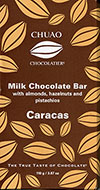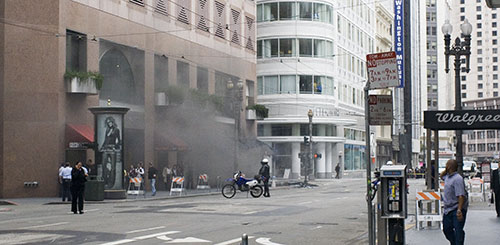I live in San Francisco’s Nob Hill. Nob is a contraction of Nabob, itself a corruption of the Urdu word Nawab, meaning the governor of a province in the Mughal empire. Of course, many locals call it Snob Hill, even though many bourgeois-bohemian neighborhoods like the nearby Russian Hill or Telegraph Hill are in reality far more exclusive, but this is where the big four robber barons of nineteenth century California, Crocker, Huntington, Stanford and Hopkins built their palaces.
I live just across Grace Cathedral, former location of the Crocker spite fence, which gives a good illustration of the robber barons’ arrogant contempt for the law or common decency. They monopolized energy and the vital railroads that transported agricultural produce to the principal markets in the East Coast, and bled farmers white with high fares, with the complicity of venal politicians. The populist backlash around the turn of the century led to the initiative system that features so prominently in California politics, and renders it to a large extent ungovernable.
The nabobs have left, and their mansions have been converted into fancy hotels, public parks or a cathedral. Despite the hotels, Nob Hill had a reputation for being a gastronomic wasteland, specially when compared with Polk Gulch and Russian Hill, but that has changed dramatically in the four years I have been living here.
Last week, I went to Rue Saint Jacques, a new French restaurant that opened a mere seven weeks ago. I once lived at 123 rue Saint Jacques in Paris, when staying in a dorm at the Lycée Louis-le-Grand, so I got a kick from the name. It is apparently named after a tony restaurant in London where the chef once worked. The starter course, a salmon tartare on a bed of Belgian endives was somewhat lackluster, but the next course, a filet of beef in a foie gras sauce, was absolutely heavenly, as was the nougat glacé, a sort of ice cream studded with candied fruit and nuts to resemble Montélimar nougat.
Another restaurant that opened its doors recently is C&L, a steakhouse which replaced the Charles Nob Hill restaurant. You could be excused for thinking this place does not want your business — the only sign of their presence is a very discreet brass plaque on a residential building. Charles Nob Hill had a good French nouvelle cuisine style menu, but unsurprisingly marred with affectation and not offering great value for money. These defects have been mostly addressed in the new restaurant, which has the same owners and is managed by the same staff.
The canonical steakhouse in San Francisco is Harris, but C&L does not compete with it head-on. The waitstaff is far more friendly, for starters, and the preparations are more refined as well. This is not to ding Harris, which is a very solid, if traditional and conservative steakhouse, regularly featured among the top ten in the nation — Harris’ filet mignon Rossini is a must-experience for meat lovers. That said, C&L’s menu is more innovative, albeit with smaller portions. I had their tangy mussel soup, followed with their “pot pie”, a chunky steak served with glazed vegetables in a copper pan lined with dough and cooked in an oven, at once relatively light and bursting with flavor. I cannot vouch for their desserts as in the two times I have been there, I did not have enough appetite left, which is saying something, as I am somewhat of a dessertarian.
Nob Hill is also home to two restaurants that offer surprisingly good value, at least by San Francisco standards. Watergate is a French restaurant with an Asian accent, e.g. traditional French preparations like duck magret in truffle sauce, paired with exotic vegetables like Bok Choy, or their warm lobster martini with jasmine pearl sauce, a perennial favorite. I am not overly fond of “fusion” cuisine as it is often a lazy attempt to thrill jaded palates, at the expense of authenticity or the internal coherency of a culinary tradition. Watergate avoids this trap – their menu is original but impeccably executed in the best of French tradition, which strives for quality ingredients and balanced preparations that emphasize rather than overwhelm delicate flavors with too many spices.
The other bang-for-the-buck restaurant is Rue Lepic, which is the opposite of Watergate in that it is a scrupulously classical French restaurant run by a Japanese chef. They offer an excellent five-course menu for $38 that would pass muster with the crustiest of French traditionalists.

